
Marvel Studios / The Walt Disney Company
THOR
Starring Chris Hemsworth (Thor), Tom Hiddleston (Loki), Anthony Hopkins (Odin), Rene Russo (Frigga), Idris Elba (Heimdall), Natalie Portman (Jane Foster), Stellan Skarsgard (Erik Selvig), Kat Dennings (Darcy Lewis), and Colm Feore (Laufey) with a special appearance by Stan Lee and a post-credits appearance by Samuel L. Jackson as Nick Fury
Directed by Kenneth Branagh
Produced by Kevin Feige
Written by J. Michael Straczynski and Mark Protosevich
Music By Patrick Doyle
Distributed by Paramount Pictures
Run Time: 1 hour and 54 minutes
World Premier: April 17, 2011, in Sydney, Australia
Opening Weekend Box Office: $65 million (North America)
Worldwide Box Office: $449 million
Rotten Tomatoes Score: 77%
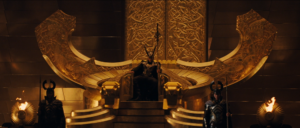
Marvel Studios / The Walt Disney Company
Memorable Thor Quotes
“This is as big, and as broad, as the Universe itself. But it comes down to fathers and sons.” – Kenneth Branagh describing his vision for Thor, a vision that quickly won Kevin Feige over and inspired Feige to hire Branagh to direct the fourth MCU film.
“[Kenneth Branagh] brought the Shakespearean tone of the history and the comic books to life in a way that I don’t think anyone else could have.” – Chris Hemsworth praising Director Kenneth Branagh.
“Chris Hemsworth is a magnificent Thor, and Tom Hiddleston is a superb Loki. They will live forever in Marvel and movie history as incredible characters. I feel very happy to have been part of making that happen.” – Director Kenneth Branagh
“The script [for Thor] is really two things. It’s the origin story of Thor, but it’s also the origin story of Loki, his [adopted] brother – and as any comic reader knows, the villain of the piece. But he’s an interesting villain, he’s not the mustache-twirling ‘I will destroy you’ villain.” – Kevin Feige discussing Loki’s important part in the story of Thor.
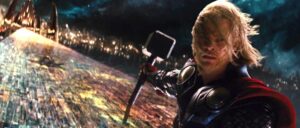
Marvel Studios / The Walt Disney Company
Fun Thor Facts
Thor was created for Marvel Comics by Stan Lee, Larry Lieber, and Jack Kirby, debuting in Journey into Mystery # 83 in August of 1962.
Director Kenneth Branagh first met with Marvel Studios on August 29, 2008, meeting with Marvel Studios President Kevin Feige and producer Craig Kyle. Branagh was a lifelong Thor fan who’d received critical acclaim for his various motion picture adaptations based on the works of William Shakespeare which include Much Ado About Nothing, Hamlet, and Henry V. Following the success of Iron Man in the Summer of 2008, and with knowledge that the Marvel Studios team were actively developing a Thor film, Branagh wrote a 5-page script for a potential Thor film, which he presented to Feige and Kyle in Los Angeles, California. Feige was quickly won over by Branagh’s vision, and Branagh was officially hired to direct Thor soon after this meeting.
With Iron Man having provided the foundation for the Marvel Cinematic Universe in a very grounded, real-world sort of way, deciding how to incorporate Thor into that same world was a tremendous challenge for the Marvel Studios team. Thor was a character with nearly 50-years of Marvel Comics history at the time and a character that was based on the actual Norse deity of the same name who is worshiped to this day as the God of Thunder. (In fact, Thursday was named after Thor – Thor’s Day). So, with Thor came all of this elaborate religious mythology and a wide array of colorful characters that made up his supporting cast in both the comics and in Norse Mythology. There was the All-Father Odin; the King of the Aesir, the Goddess Frigga (Odin’s wife in the comics), and of course Loki; the Norse Trickster god; the God of Mischief (Thor’s adopted brother in the comics). There was also Asgard, the Bifrost and the Rainbow Bridge, the Lady Sif and The Warriors Three, the all-seeing Heimdall, the Nine Realms, and lots of magic and monsters. Indeed, Thor as a character and as a god was anything but grounded! An early decision was therefore made to explain the magical elements of Thor away as science that is simply not yet understood, while the gods and monsters themselves were not metaphysical beings at all, but rather real, living, breathing, physical beings, be they gods from Asgard, or Frost Giants from Jotunheim. They are born. They live. They die. Just like us. It was in this way that the otherworldly characters introduced in Thor would be grounded to not only inhabit the same world as Tony Stark, but to also be relatable for audiences.
The initial release date for Thor as announced by Marvel Studios was July 16, 2010. This date was ultimately pushed back a year to June 17, 2011, before eventually landing on the May 6, 2011, date.
In February of 2009, a casting call went out as Marvel Studios began searching for their Thor. 25-year-old Australian actor Chris Hemsworth sent in an audition tape, but Marvel Studios took a pass on Hemsworth. In the meantime, 28-year-old British actor Tom Hiddleston (who’d worked previously with Kenneth Branagh) auditioned for the role of Thor, but he too was passed over … for the role of Thor anyway. Upon meeting Hiddleston and witnessing his work, Marvel Studios felt he was just-right for another important part in their Thor film, and just like that, Marvel Studios had found their Loki! Three-months later, Marvel Studios gave Chris Hemsworth another shot at landing the role (Chris’ brother Liam Hemsworth was being strongly considered for the part at the time). Chris blew the Marvel Studios team away with his performance this time around, and Marvel Studios suddenly had their Thor! It had been Chris Hemsworth all along!
Over the course of the Summer of 2009, Marvel Studios continued to add to the cast of Thor. Natalie Portman joined the cast as Thor’s love interest Jane Foster in July, followed by Jamie Alexander (as Sif) and Colm Feore (as King Laufey) in September. As Summer turned to Fall, Anthony Hopkins was cast as Odin, followed by the castings of Stuart Townsend (who would ultimately be replaced by Josh Dallas), Tadanobu Asano, and Ray Stevenson as The Warriors Three, followed by Idris Elba as Heimdall. At the close of 2009, Rene Russo was cast as Queen Frigga.
One of the physical challenges the Marvel Studios team were faced with in bringing Thor to life involved the development of the God of Thunder’s traditional red cape. The filmmakers decided against a CGI cape in favor of a practical one, and eventually got it right, creating a cape that was comprised of English wool that was dyed and heat-pressed, then bonded with chiffon in certain sections, then fashioned on a frame, complete with strategically placed weights throughout.
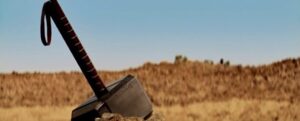
Marvel Studios / The Walt Disney Company
Another challenge was the design of Thor’s enchanted Hammer Mjolnir. Marvel Studios concept artists had created a reported 200 different looks at one point that had to be chosen from, but in the end, the decision was made to simply try and make Mjolnir look like it does in the Marvel Comics. Once again, they got it right!
Though there were several Frost Giants added in post-production via CGI, the look of the primary Frost Giants in Thor was made practically via makeup and paints. Legacy Effects assisted in bringing the Frost Giants to life. Colm Feore, who portrays Loki’s biological father King Laufey in Thor, endured a makeup and costuming process that lasted 6-7 hours per day in order for his character to be brought to life.
Careful attention was paid to the creation of Asgard in Thor. Asgard is the home world of Thor and the Asgardian people as well as the Capital of the Nine Realms, which are connected by Yggdrasil (the World Tree). As a planetary body, Asgard was designed to sprawl outward from a central island on a double-sided plane. Asgard was furthermore designed to appear as a heavenly domain that was the envy of the Galaxy where the weather was always pleasant, with blossom and harvest coinciding, and with its beautiful waters cascading over a steep edge into Space. At the center of the Asgardian City was the Royal Palace of Valaskjalf from which Asgard’s King ruled. In addition to the Palace, the Royal Domain included the Royal Aviary and Armory, the Einherjar Barracks, the Asgardian Dungeons, and the Golden Observatory which stationed Heimdall and housed the Bifrost (which allowed the Asgardians to travel instantaneously throughout the Nine Realms). The Asgardian Throne was known as Hlidskjalf and the Asgardian King was armed with the mighty spear Gungnir; a symbol of Kingship and the tool with which the robotic Asgardian Destroyer could be controlled. Most of Asgard’s aesthetics were created via CGI in post-production.
There were a reported 1,309 visual effects shots in Thor.
Filming on Thor commenced on January 10, 2011, in Los Angeles, California. In March, production moved to Santa Fe, New Mexico, where the town of Puente Antiguo was constructed. The scene in Thor that sees Clark Gregg’s Agent Phil Coulson investigating the crater which houses the crashed Mjolnir, was used as the post-credits scene of Marvel Studios’ Iron Man 2, more or less serving as Thor’s official introduction into the MCU. Filming on Thor lasted nearly four-months in total, with principal photography wrapping on May 6, 2010.
The Avengers Director Joss Whedon assisted in the final product of Thor in an effort to further tie Kenneth Branagh’s film to Whedon’s upcoming film. This included adding Jeremy Renner’s Clint Barton / Hawkeye to the movie, which served as that character’s introduction, in addition to the post-credits scene which Whedon directed that featured Stellan Skarsgard’s Erik Selvig, Tom Hiddleston’s Loki, and Samuel L. Jackson’s Nick Fury, and that also officially introduced the glowing Cosmic Cube known as the Tesseract into the Marvel Cinematic Universe. This scene revealed that Loki survived his fall from Asgard at the end of the movie and was now covertly influencing the mind of Selvig, who’d been recruited by Fury to study the Tesseract, joining S.H.I.E.L.D.’s Project P.E.G.A.S.U.S.
On July 24, 2010, Marvel Studios returned to San Diego Comic Con for their fourth independent presentation there. Marvel Studios presented a Thor panel in Hall H that included Kevin Feige, Kenneth Branagh, Clark Gregg, Chris Hemsworth, Tom Hiddleston, Natalie Portman, and Kat Dennings, during which footage from Thor was shown to the audience. From there, Marvel Studios also treated the SDCC fans in Hall H to the first-ever assembling of their Avengers as The Avengers Director Joss Whedon brought out Chris Hemsworth (Thor), Robert Downey Jr (Tony Stark / Iron Man), Samuel L. Jackson (Nick Fury), Scarlett Johansson (Natasha Romanoff / The Black Widow), Chris Evans (Steve Rogers / Captain America), Jeremy Renner (Clint Barton / Hawkeye), and newcomer Mark Ruffalo (Bruce Banner / The Hulk) to stand together on-stage in a preview of what fans had coming in just under two-years.
Two renowned Thor comic book writers made cameo appearances in 2011’s Thor. Walter Simonson revolutionized the Thor character and enhanced the character’s mythology during his acclaimed run from 1983-1986, introducing readers to the popular Beta Ray Bill character and memorably transforming Thor into a frog. Simonson can be seen seated alongside Jaimie Alexander’s Lady Sif during the banquet scene near the end of the film. J Michael Straczynski returned Thor to the Marvel Universe following a three-year absence, writing Thor from 2007-2009, during which time he introduced readers to Lady Loki. Straczynski is the first individual we see trying to lift Mjolnir in the desert. Thor co-creator Stan Lee also has a cameo in Thor. Stan is the man who drives a pickup truck that has been chained to Mjolnir in an effort to budge the enchanted Hammer. This cameo marked Stan’s fourth cameo in the MCU following previous appearances in Iron Man, The Incredible Hulk, and Iron Man 2.
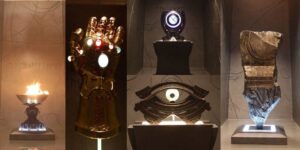
Marvel Studios / The Walt Disney Company
In Thor, and within Odin’s Weapon’s Room / Treasure Vault, several objects can be seen that may be familiar to comic book readers. Among them are The Tablet of Life and Time, The Warlock’s Eye, The Eternal Flame (revisited in 2017’s Thor: Ragnarok), The Casket of Ancient Winters (sacred to the Frost Giants), and an Infinity Gauntlet. In 2017’s Thor: Ragnarok, the Infinity Gauntlet seen in 2011’s Thor was labeled a “fake” by Odin’s firstborn child Hela.
In Thor, after S.H.I.E.L.D. arrives upon the scene in Puente Antiguo, Stellan Skarsgard’s Erik Selvig audibly mentions a former colleague who was a “Pioneer in Gamma Radiation.” This is a subtle reference to Doctor Bruce Banner (The Hulk), who was introduced in Marvel Studios’ 2008 film The Incredible Hulk.
In Thor, when The Destroyer invades Midgard (Earth), surrounding Agents of S.H.I.E.L.D. speculate as to whether or not the robotic weapon of the gods could belong to “Stark.” This is of course a reference to the Tony Stark character that had appeared previously in the MCU films Iron Man, The Incredible Hulk, and Iron Man 2.
Thor was the first MCU film to be released in 3D.
Thor was released on DVD, Blu-ray, and Blu-ray 3D on September 13, 2011. The home video releases featured a Road to The Avengers special and the Marvel One-Shot: The Consultant short film which sees Phil Coulson and Jasper Sitwell sabotage the efforts of General Thaddeus Ross to include Emil Blonsky in S.H.I.E.L.D.’s “Avengers Initiative” and makes better sense out of Ross’ meeting with Tony Stark in 2008’s The Incredible Hulk.
On March 25, 2012, at the Jameson Empire Awards in London, England, Tom Hiddleston won the Award for Best Male Newcomer for his performance as Loki in Thor, while Thor won the Award for Best Sci-Fi / Fantasy Film.
On July 26, 2012, at the Saturn Awards in Burbank, California, Thor‘s Alexandra Byrne won the Award for Best Costume Design for her work on Thor.
As the Marvel Cinematic Universe evolved over the years, debates over when various events actually occurred began to plague the fandom. Originally, most everyone viewed the MCU Timeline as existing concurrently with our real-life timeline, i.e., Iron Man was released in 2008, therefore, the events of Iron Man primarily take place in 2008. However, the release of Iron Man 2 in 2010, and Thor in 2011, complicated things, as those films suggested that most of the events seen in Iron Man 2 happen concurrently with the events seen in both Thor and The Incredible Hulk as a series of events that were labeled “Fury’s Big Week” by Marvel Entertainment, the Timeline of which was first laid out in an intended MCU tie-in comic book of that same name. “Fury’s Big Week” was revisited upon a Branched Timeline in 2021 in Marvel Studios’ Disney+ animated series What If …? Season One in the episode titled What If … the World Lost its Mightiest Heroes? Beyond that, in 2023, Marvel Studios endorsed the release of a book that was intended to settle lingering disputes within the fandom, titled Marvel Studios – The Marvel Cinematic Universe: An Official Timeline. This book confirmed that the press conference in which Tony Stark came out as Iron Man occurred in the Spring of 2008. For years, most fans assumed that Iron Man 2 took place about six-months after Iron Man, but the Timeline book revealed that while Ivan Vanko does in fact begin working on his “Whiplash” armor following the death of his father in late-Spring of 2008, it actually takes him two years to complete his work and the Armed Services Committee Hearing at the beginning of Iron Man 2 actually takes place in early-Spring of 2010. So, Tony Stark has been Iron Man for two full years when we catch up with him at the Stark Expo. From there, Iron Man 2, The Incredible Hulk, and Thor overlap as follows: The Monaco Grand Prix incident occurs on May 5, 2010; just before General Thaddeus Ross leads a special ops team into Brazil to capture Bruce Banner, triggering Banner’s transformation into The Hulk at a local bottling plant. Then, right after Justin Hammer hires Ivan Vanko, Thor’s coronation in Asgard is interrupted by Frost Giants. Next, Tony Stark brawls with James Rhodes at his Malibu Estate, after which Director of S.H.I.E.L.D. Nick Fury reconvenes with Tony at a doughnut shop. As Stark gets to work on a cure to his Palladium poisoning, Thor gets banished from Asgard to Earth by Odin after provoking a war with the Frost Giants. The battle at the Stark Expo pitting Iron Man and War Machine against Ivan Vanko then occurs, followed by Loki’s temporary seizing of the Asgardian Throne and brief visit to Thor on Earth while also on Earth, Bruce Banner returns to the United States from Brazil. Next, Thor’s Hammer is located by Agent Coulson in New Mexico, and he informs Director Fury of the find. Emil Blonsky soon thereafter gets injected with Super Soldier serum, right around the time that Thor fights The Destroyer in New Mexico, after which he returns to Asgard to confront Loki. After the Bifrost is destroyed and Loki tumbles into the Abyss of Space, Blonsky challenges The Hulk at Culver University; a confrontation that sees the Super Soldier get physically decimated by the Green Goliath. This fight was recorded by concerned citizens and reported on by the Media, as seen in Iron Man 2. Meanwhile, Nick Fury informs Iron Man that he has been rejected for the “Avengers Initiative” but agrees to bring Stark on as a Consultant for S.H.I.E.L.D. From there, The Hulk’s fight against The Abomination (a mutated Blonsky) occurs in Harlem, after which Banner goes back into hiding. The pre-credits scene from The Incredible Hulk between General Ross and Tony Stark occurs next, after S.H.I.E.L.D. Agents Coulson and Sitwell conspire to send in Stark to sabotage Ross’ hopes of having Emil Blonsky included in Fury’s “Avengers Initiative.” It works, and days later, the preserved body of Steve Rogers / Captain America is located by a S.H.I.E.L.D. team working in the Arctic. And that is Fury’s Big Week.
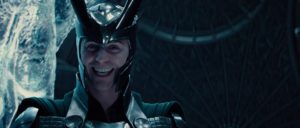
Marvel Studios / The Walt Disney Company
My Thor Review
Thor was a majestic motion picture that combined Shakespearean themes with science-fiction to create one of the most unique superhero films ever made up to that point in time. It was also (at the time) the most aesthetically beautiful motion picture Marvel Studios had ever produced as well as the most emotionally complex. Thor was Marvel Studios’ first origin story since 2008’s Iron Man, and it was the film that first took the MCU beyond the stars, opening the door to the Cosmic side of the Marvel Cinematic Universe, which would be greatly expanded upon in ensuing years.
Thor tells the story of two Prince’s of Asgard who are raised side-by-side until the Throne divides them and sets them upon two very different paths. In the beginning, Thor is the brash, rebellious, and egotistical son that is always anxious for a fight while Loki is the soft-spoken, eager-to-please, and quietly jealous son. Their father Odin has raised both of his sons to believe that they were born to be kings, but the story takes a turn when Loki learns that he is adopted and is the son of the Frost Giant King Laufey. Loki learns this around the same time that Thor is cast out of Asgard by Odin and Loki’s ascent to the Throne coincides with Thor’s fall, but personally speaking, Loki’s rise is a turn to villainy while Thor’s fall teaches him what it means to be a hero.
In my opinion, Thor would have only worked with the right vision and the right cast, and Marvel Studios nailed it when it came to choosing who would direct this film, and who would portray these iconic characters who were not only Marvel comic book properties, but to some, actual deities. Just as Robert Downey Jr perfectly brought Tony Stark to life on film previously, Chris Hemsworth perfectly brought the God of Thunder to life, but doing this successfully went beyond just Hemsworth. Oftentimes in superhero films, the hero is defined by their villain, and that was certainly the case with this motion picture as Tom Hiddleston was incredible as Loki!
This was not a mere case of two characters being at odds and fighting either; Thor and Loki had a relationship and a bond that was clearly illustrated during their scenes together. As a viewer, I believed that underneath their bravado, Thor loved Loki and that Loki (in his own way) loved Thor, and this gave the film a tremendous depth that made many scenes more meaningful beneath their surface. As Thor, Chris Hemsworth had confidence that bordered on arrogance, and a chiseled physique. He was big, and strong, and charismatic, but within his eyes was a passion and a sincerity that brought his entire character together. Tom Hiddleston meanwhile was cunning and calculating, and he had a sinister smile, but his character depth was also found within his eyes, which were hauntingly desperate, and through which hints of a very damaged soul shined. Loki was as tragic as he was evil and whether they were standing side-by-side as brothers or fighting each other on the Rainbow Bridge, Hemsworth and Hiddleston had incredible chemistry.
I thought Loki was written perfectly as a villainous character, obtaining an origin story that was grounded in lies and despair. Anyone that has ever felt overlooked, underappreciated, or lost in the shadow of a sibling can relate to Loki, as can anyone that has ever had to wrestle with the frustrations of not measuring up to a loved one’s expectations, particularly those of a parental figure. These are complex, life-changing, and soul-shattering trials that only the strongest emerge from without scars, and Loki as a Marvel character is sort of the patron saint of the damaged, the outcast, and the fallen; a character that detests the proverbial cards that he has been dealt and that will do whatever it takes to come out of the game ahead in the end. Loki is certainly not a character without its flaws, but it is those flaws that make him so endearing and to many, so relatable, and to more still, so beloved. Loki – my personal favorite character in all of comics – was easily my favorite part of Thor, and I don’t have enough compliments to bestow upon Tom Hiddleston to justifiably praise his work with this character.
Next, I have to discuss Anthony Hopkins as King Odin, the All-Father. Again, what an amazing casting choice by Marvel Studios! Hopkins portrayed the character with passion, nobility, and aggression, and there was perhaps no scene more powerful in Thor than the one in which Odin casts Thor out of Asgard. The performances of Hemsworth, Hopkins, and Hiddleston during this scene specifically were mesmerizing!
Speaking of Asgard, just seeing the Realm Eternal brought to life was amazing! The architecture of the buildings and the beauty of the waters that surrounded the planetary body were really well done and I especially loved the sky, particularly at night. Asgard looked like a Heaven that I would want to go to!
There were so many other things that Marvel Studios got right in Thor! I loved seeing Lady Sif and The Warriors Three, whose spirits were captured flawlessly, and I enjoyed seeing The Destroyer brought to life, and I thought the nature of Mjolnir was perfectly achieved with Thor throwing the Hammer and it returning back to him and whatnot. I also loved seeing the God of Thunder conjure lightning on Jotunheim and wielding it against the Frost Giants; just an incredible and visually stunning scene that did a great job of capturing Thor’s immense power in a matter of seconds!
Back on Midgard, I enjoyed seeing Thor trying to fit-in on Earth after getting cast out of Asgard. The way the God of Thunder interacted with the humans that he encountered allowed room for some humor in what was otherwise a very heavy film, emotionally speaking. Thor going into a pet shop and asking for a horse was one of my favorite moments and I also loved the scene where everyone tries to lift Mjolnir in the desert to no avail, which came right out of the comics. Thor trying to break into the S.H.I.E.L.D. barricade was also a fantastic sequence, and the Hawkeye cameo was an awesome bonus!
I also have to mention the big showdown pitting Thor against Loki at the end of the film! This was an incredible fight scene that saw each actor stay precisely true to their characters throughout. It was so sad to see Loki sort of try and become all of the things he resented Thor for being in an effort to earn Odin’s approval and emerge as Thor’s equal in his father’s eyes. Loki’s entire plan was based on this logic, and he so desperately wanted it, he was willing to not only slay his biological father in the name of his adopted one, but to destroy the entire Frost Giant race in Odin’s name. Loki fought Thor with rage, anger, aggression, and yes, a hint of malevolence, but he also fought Thor with conviction and with literal tears in his eyes. This was an emotionally complex war between one brother that had risen above his pride and another who had been crushed by it. Make no mistake, Thor’s rise would have never occurred without Loki’s fall.
This will probably sound blasphemous to most Marvel fans, but Thor was for me at the time, my favorite of the four Marvel Studios films that had been released up to that point. When you take into consideration the costumes and the set pieces and the music and the effects, and the stellar performances that bled through all of the mythology; it was a huge achievement in comic book moviemaking. I love this film!

Marvel Studios / The Walt Disney Company
Highlights of Thor:
Tom Hiddleston is Loki
Chris Hemsworth is Thor
Chemistry between Chris Hemsworth and Tom Hiddleston
Thor vs Loki
Loki Discovers that He is a Frost Giant
King Loki!
Mjolnir
Thor vs Frost Giants
Asgard
The Execution of the Bifrost / Rainbow Bridge
Anthony Hopkins as Odin
Majestic Costumes and Elaborate Set Pieces
Hawkeye Cameo
The Lady Sif and The Warriors Three
Post-Credits scene featuring Samuel L. Jackson as Nick Fury
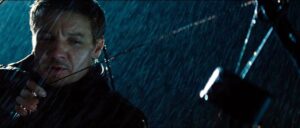
Marvel Studios / The Walt Disney Company
Continue Following Thor’s MCU journey in The Avengers (2012), Thor: The Dark World (2013), Avengers: Age of Ultron (2015), Thor: Ragnarok (2017), Avengers: Infinity War (2018), Avengers: Endgame (2019), and Thor: Love and Thunder (2022).
Continue following Loki’s MCU journey in The Avengers (2012), Thor: The Dark World (2013), Thor: Ragnarok (2017), and Avengers: Infinity War (2018).
Continue following Nick Fury’s MCU journey in Captain America: The First Avenger (2011), The Avengers (2012), Captain America: The Winter Soldier (2014), Avengers: Age of Ultron (2015), Avengers: Infinity War (2018), Captain Marvel (2019), Avengers: Endgame (2019), Spider-Man: Far From Home (2019), Secret Invasion (2023), and The Marvels (2023).
Continue following Phil Coulson’s MCU journey in Marvel One-Shot: The Consultant (2011), Marvel One-Shot: A Funny Thing Happened on the way to Thor’s Hammer (2011), The Avengers (2012), and Captain Marvel (2019).
Continue following the MCU journey of Jasper Sitwell in Marvel One-Shot: The Consultant (2011), The Avengers (2012), Marvel One-Shot: Item 47 (2012), and Captain America: The Winter Soldier (2014).
Continue following the MCU journey of Clint Barton in The Avengers (2012), Avengers: Age of Ultron (2015), Captain America: Civil War (2016), Avengers: Endgame (2019), Black Widow (2021), and Hawkeye (2021).
Continue following the MCU journey of S.H.I.E.L.D. in Marvel One-Shot: The Consultant (2011), Thor (2011), Marvel One-Shot: A Funny Thing Happened on the Way to Thor’s Hammer (2011), Captain America: The First Avenger (2011), The Avengers (2012), Marvel One-Shot: Item 47 (2012), Captain America: The Winter Soldier (2014), Ant-Man (2015), Ant-Man and The Wasp (2018), Captain Marvel (2019), and Black Widow (2021).
Continue following Odin’s MCU journey in Thor: The Dark World (2013) and Thor: Ragnarok (2017).
Continue following Frigga’s MCU journey in Thor: The Dark World (2013) and Thor: Love and Thunder (2022).
Continue following Heimdal’s MCU journey in Thor: The Dark World (2013), Avengers: Age of Ultron (2015), Thor: Ragnarok (2017), Avengers: Infinity War (2018), and Thor: Love and Thunder (2022).
Continue following Jane Foster’s MCU journey in Thor: The Dark World (2013), and Thor: Love and Thunder (2022).
Continue following Erik Selvig’s MCU journey in The Avengers (2012), Thor: The Dark World (2013), Avengers: Age of Ultron (2015), and Thor: Love and Thunder (2022).
Continue following Darcy Lewis’ MCU journey in Thor: The Dark World (2013), WandaVision (2021), and Thor: Love and Thunder (2022).
Continue following the MCU journey of the Lady Sif in Thor: The Dark World (2013) and Thor: Love and Thunder (2022).

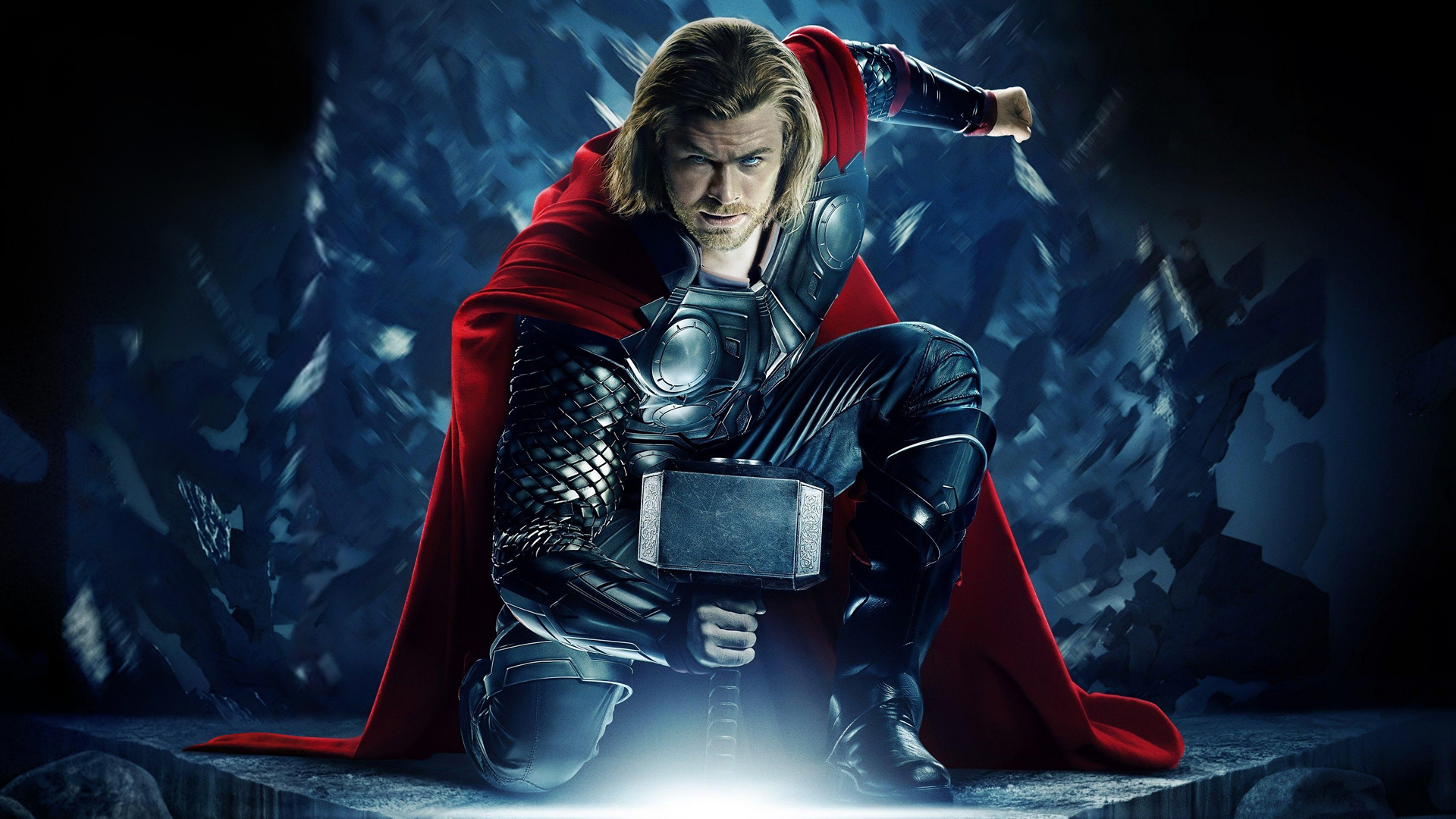
Very nice post. I absolutely love this website. Keep writing!
Thank you SO much for the compliment and comment!